Detection dogs in Conservation
Project leadership: Dr. Annegret Grimm-Seyfarth
Staff responsible:
Dr. Annegret Grimm-Seyfarth, Wiebke Harms, Veronika Koch
Project duration: seit 2014
Contact person: Dr. Annegret Grimm-Seyfarth
Cooperation partners: Otterzentrum Hankensbüttel, Wildlife Detection Dogs, Monitoring Dogs
Background
The lists of the earth's endangered animals and plants are getting longer and longer. They suffer from climate change, habitat loss and other anthropogenic drivers. But in order to make reliable statements about their populations and distributions and to stop this trend, there is often a lack of important information. It is often difficult to find out where exactly the individual species still occur and how their populations are developing. Especially hidden and nocturnal animals or rare plants can hardly be found visually. Specially trained wildlife detection dogs can be a valuable help in such cases.
A dog's sense of smell is virtually predestined to find the smallest traces of the species it is looking for in nature. While humans have about six million olfactory receptors, a herding dog has more than 200 million of them. This means that dogs can perceive an extremely large number of different smells and in very small concentrations. For example, they can easily find the droppings of animals and even perceive plants, fungi and animals under the ground.
In the Working Group COPE, species detection dogs are therefore increasingly used as a detection method. They play a role in several projects and can detect different animal and plant species. In the following we present a few examples.
Meet the pack
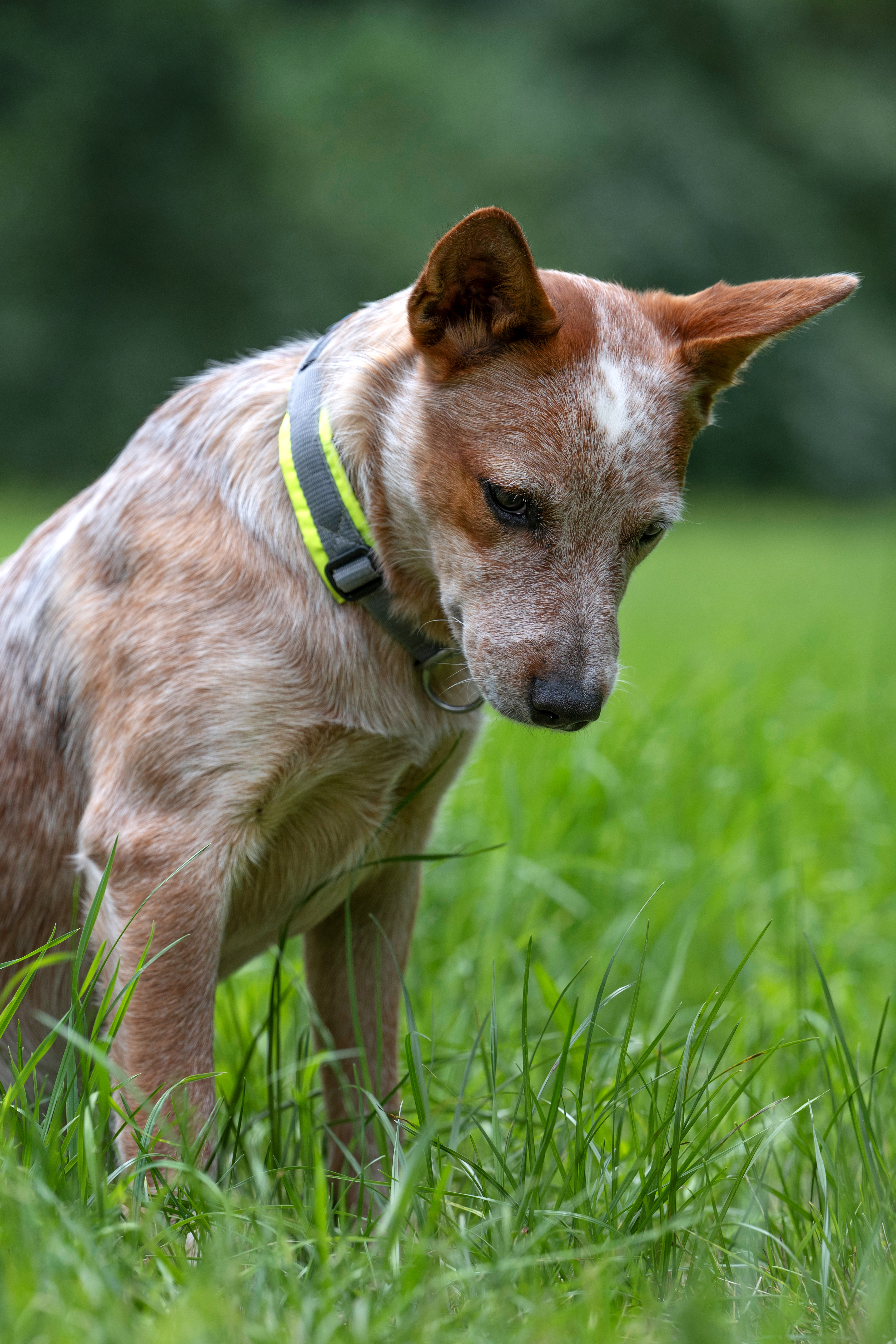
Current projects with detection dog deployment
The Eurasian otter (Lutra lutra) is one of these secretive and nocturnal species. In Germany, this species lives particularly hidden, is nocturnal and difficult to observe. However, since otters defecate a lot, which they use for intraspecific communication, the search for otter scats as a non-invasive search method became the standard survey method. In previous studies, the faeces were searched and collected from trained people. However, in the period between 2006 and 2012, the sympatric occurrence of the American mink (Neovison vison) increased dramatically in the study area of the Upper Lusatian Heath and Pond Landscape. While at the beginning of the study only single scat samples collected could be reliably genetically assigned to the mink, in 2010-2012 over 10% of all samples collected and visually identified as otter actually came from the mink. A total of 34% of the samples came from sympatric carnivores whose faeces resembled those of the otter in shape and colour due to fish being the main food source. Therefore, verification of the focal species is extremely helpful before using expensive genetic methods.
One of the first goals of this project was to train dogs to discriminate between species of scats. Such kind of detection dogs are already widely used in nature conservation as so-called scat detection dogs. In previous studies, dogs were able to successfully discriminate between sympatric, closely related species and even single individuals. Based on these possibilities, we evaluated the usefulness of scat detection dogs in a first study using the Eurasian otter as an example. We went a step further and wanted to know whether detection dogs are able to discriminate between closely related species even if they have fed on exactly the same diet (fish), which means that a large part of the scat consists of identical particles regardless of the species it comes from. For this test, we trained two dogs on otter scat and two other dogs on mink scat. All four dogs then had to undergo an elaborate discrimination training. Finally, each dog was tested for sensitivity and selectivity.
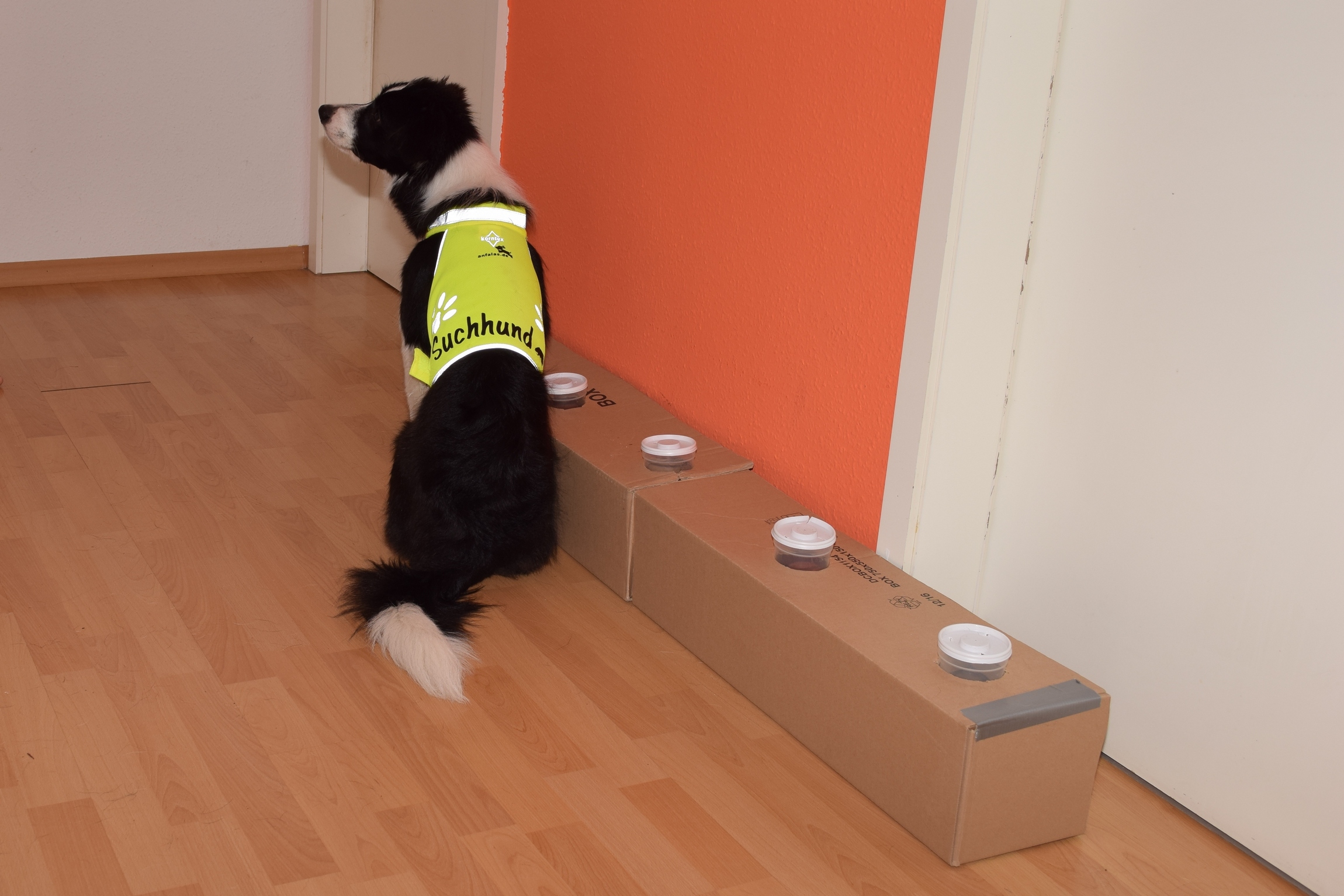
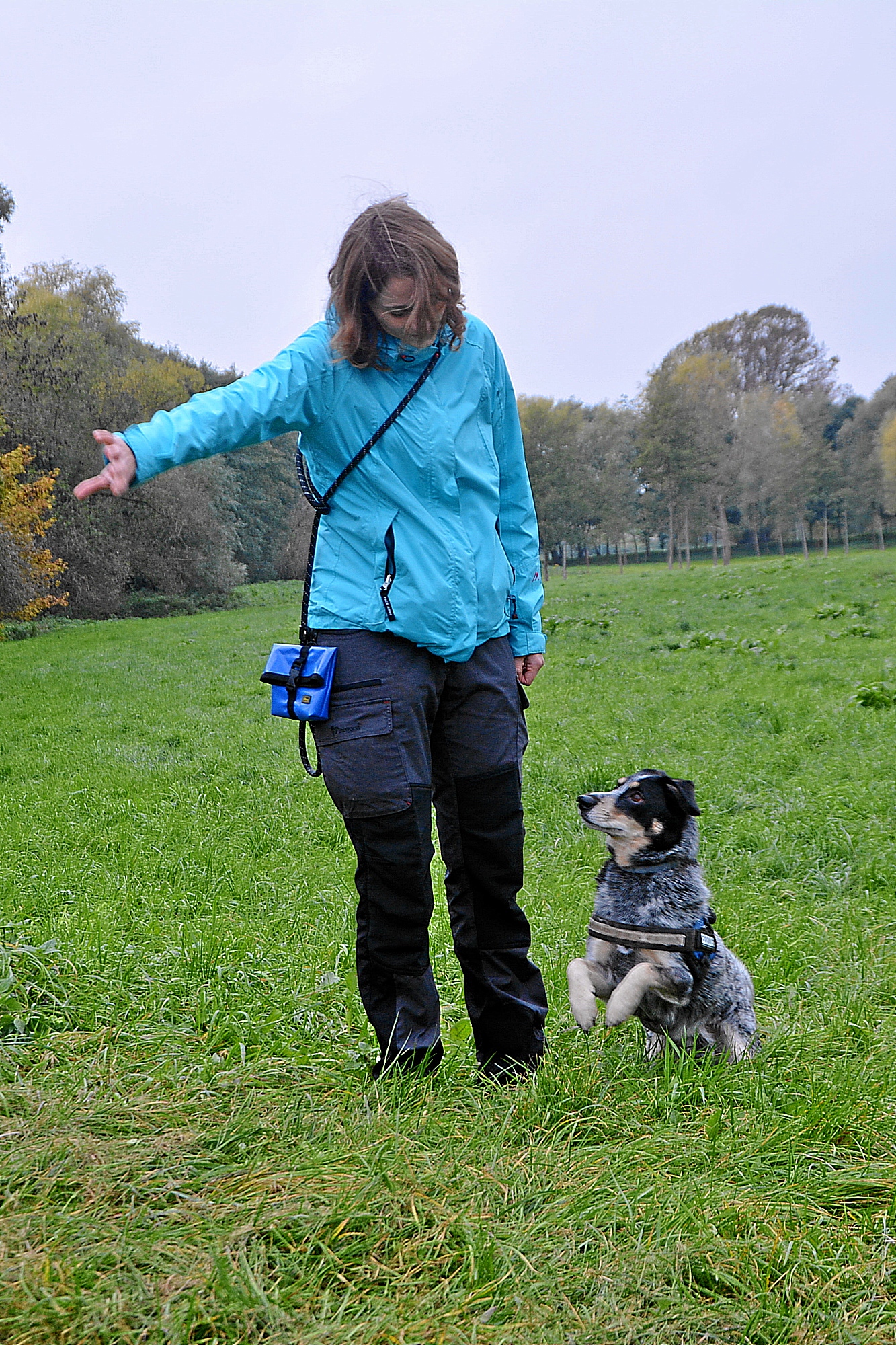
In a next step, we compared the performance of the detection dogs in real field situations with that of trained people. Detection dog teams and human teams had to search the same transects and note down where they found which scat. Each scat was photographed for identification. This test took place in a natural range of the otter, so that no scat had to be spread and touched by a human beforehand.
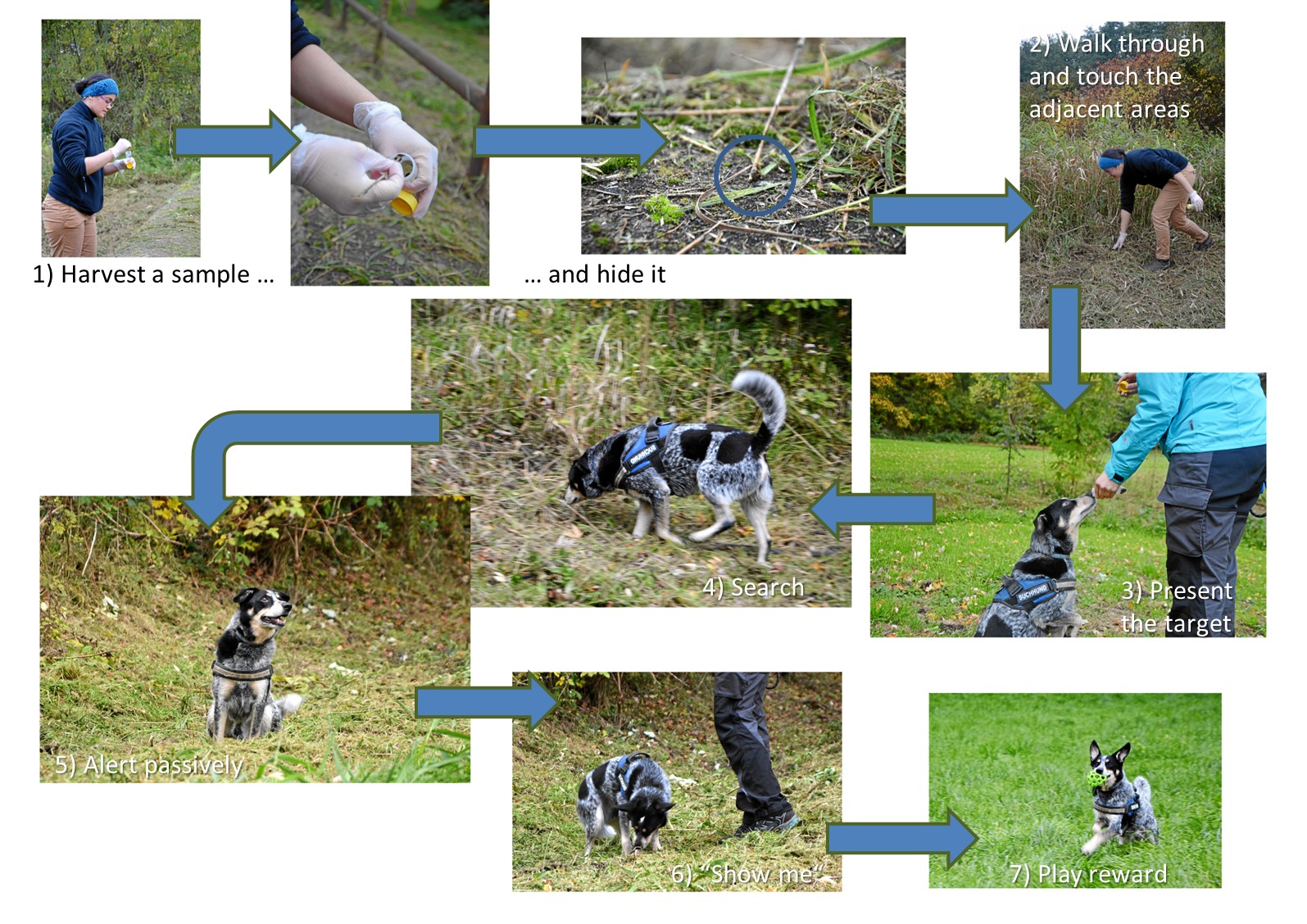
The trained detection dogs were very successful in distinguishing between species with up to 100% accuracy, even when they were closely related and were fed with the same diet. The average accuracy of all trained dogs was 0.95, beating even the experts in the field, who only achieved an average accuracy of 0.89. The average accuracy of all trained people tested was 0.58, which is within the realm of chance.
In real fieldwork, it was also shown that a search with detection dogs is faster and considerably more scats were found than with traditional visual searches. The scat detection dogs found four times more scat samples than the human teams, were twice as fast and were not interested in how big the scat was or what colour it was. Humans, on the other hand, predominantly found larger and lighter-coloured scats and overlooked small or hidden scats.
One of our recent otter projects can be found here.
In nature conservation, detection dogs can not only detect the scat or traces of certain animals, but also the animals themselves. They can therefore be particularly useful in the search for amphibians and reptiles. In a pilot study, we were for example able to show that a trained detection dog can easily find green lizards.
One of our main fields of application is the search for newts. Newt detection dog Zammy can meanwhile detect pond, great crested, alpine and palmate newts. While we know comparably a lot about their aquatic life and can protect their spawning habitats accordingly, we still know almost nothing about their terrestrial habitats. However, this knowledge is indispensable for effective species conservation, especially since the animals spend most of their lives on land. The main problem is therefore to find the animals or their hideouts on land. Therefore, we currently have a trained newt detection dog that can find migrating animals as well as the summer and winter retreats. He is currently helping us to collect valuable habitat data, which we then evaluate.
Find out more information about the project here.
Besides the search for newts, we are intensively involved in the search for hidden toads, especially the natterjack toad. Although natterjack toads can be found by typically "turning stones", it sometimes takes a long time to find a stone under which a toad is also sitting. Moreover, in denser habitats, visual search is almost impossible. Whether and to what extent the pioneer species therefore uses such microhabitats at all, whether for migration or as a refuge, is therefore unknown so far. The natterjack toad detection dogs are intended to close this gap. They are also used to effectively search for the animals within larger radii of the main occurrence areas.
Find out more information about the project here.
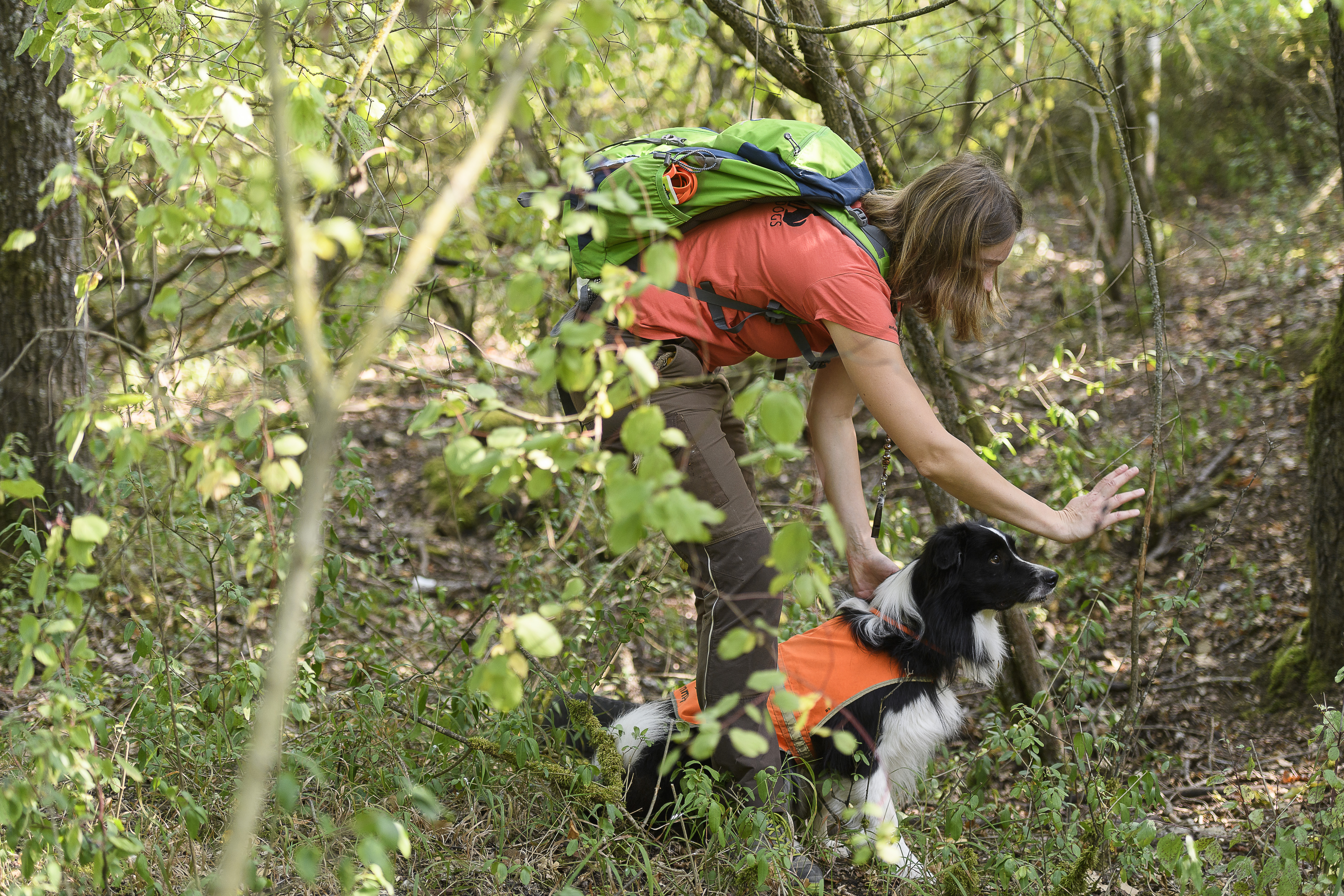
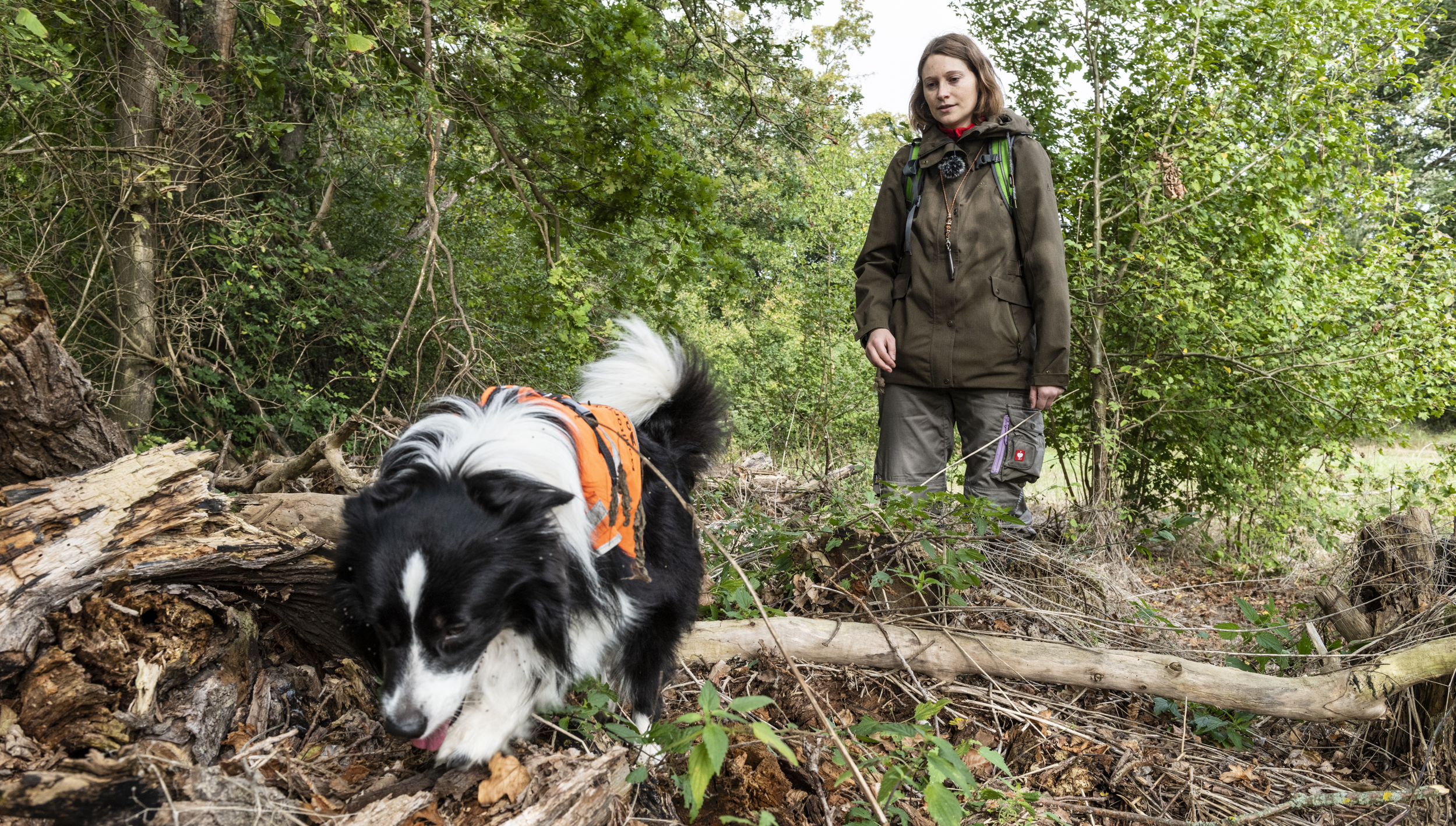
Invasive alien species (IAS) cause problems for the protection and conservation of native flora and fauna, create economic damage and in some cases endanger the health of humans. IAS are a major cause of biodiversity loss. In a citizen science project, we are currently training dog owners and their dogs to search for IAS using a controlled methodology. Activities of the project include developing information materials, conducting training and collecting IAS data.
Find out more here or at www.igamon.de.
In recent decades, dogs have been increasingly used to detect rare and hidden species and their tracks. The use of wildlife detection dogs is particularly well established in North America, Europe and Oceania, and projects using wildlife detection dogs have increased worldwide. However, if they are to make a significant contribution to conservation and management, their strengths, capabilities and limitations need to be identified.
For this reason, a review study was carried out at the UFZ in cooperation with Dr Anne Berger from the Leibniz Institute for Zoo and Wildlife Research (IZW) in Berlin, in which 1220 publications were evaluated documenting the use of such search dogs in more than 60 countries. More than 400 different animal species were in the focus, in addition to 42 different plant, 26 fungal and 6 bacterial species. Of particular interest was which dog breeds were used where and for which targets, and whether there were differences in their success. The results can be read in the journal "Methods in Ecology and Evolution".
Publications
- Grimm-Seyfarth, A., Harms, W. (2024): Evaluierung von herpetofaunistischen Spürhunden für Monitoring und Naturschutz. In: Henle, K., Pogoda, P., Geiger, A., Grimm-Seyfarth, A. (Hrsg.) Neue Methoden der Feldherpetologie, Mertensiella 32
Deutsche Gesellschaft für Herpetologie und Terrarienkunde (DGHT), Salzhemmendorf, S. 66 - 79. - Grimm-Seyfarth, A., Harms, W., Berger, A., (2021): Detection dogs in nature conservation: A database on their world-wide deployment with a review on breeds used and their performance compared to other methods. Methods in Ecology and Evolution 12 (4), 568 - 579.
- Grimm-Seyfarth, A., Harms, W., Mazoschek, L., Scholz, M. (2023): Landhabitate von Kamm- und Teichmolchen und deren Einfluss auf individuelle und Populationsparameter. Jahresschrift für Feldherpetologie und Ichthyofaunistik in Sachsen 24 , 50 - 81.
- Grimm-Seyfarth, A., Harms, W., Berger, A., (2021): Detection dogs in nature conservation: A database on their world-wide deployment with a review on breeds used and their performance compared to other methods. Methods in Ecology and Evolution 12 (4), 568 - 579.
- Grimm-Seyfarth, A., Harms, W., (2020): Evaluierung von Artenspürhunden beim Monitoring von Amphibien und Reptilien. Jahresschrift für Feldherpetologie und Ichthyofaunistik in Sachsen 20, 56 - 69.
- Grimm-Seyfarth, A., Zarzycka, A., Nitz, T., Heynig, L., Weissheimer, N., Lampa, S., Klenke, R., (2019): Performance of detection dogs and visual searches for scat detection and discrimination amongst related species with identical diets. Nature Conservation (37), 81 - 98.
- Grimm-Seyfarth, A., Klenke, R., (2019): Wie findet man schwer zu erfassende Arten? Vorteile und Limitierungen von Artenspürhunden. In: Schüler, C., Kaul, P., (Hrsg.) Faszinosum Spürhunde - Dem Geruch auf der Spur. Tagungsergebnisse des 4. Symposiums für Odorologie im Diensthundewesen an der Hochschule Bonn-Rhein-Sieg. Schriften der Arbeitsgemeinschaft Odorologie e.V. Band 2, Verlag Dr. Kovač, Hamburg, S. 40 - 47.
- Böcker, F., Taubmann, J., Grimm-Seyfarth, A., (2018): Wildlife detection dogs – Einsatz und Grenzen von Artenspürhunden in Wildtierforschung und Naturschutz
In: König, A., Arnold, J., Suchant, R., Sandrini, M., (Hrsg.) Wildbiologische Forschungsberichte. Tagungsbeiträge: Wildtierökologische Forschung für die Praxis - Vom Monitoring bis zum Management - (2018 im Nordschwarzwald). Schriftenreihe der Vereinigung der Wildbiologen und Jagdwissenschaftler Deutschlands 3, Kessel, Remagen-Oberwinter, S. 47 - 50. - Grimm-Seyfarth A, Klenke R A (2017): Suchhunde im Naturschutz: Geruchsunterscheidung zwischen nahe verwandten Arten mit identischer Diät. In: Schüler C, Kaul P (Hrsg.) Faszinosum Spürhunde: Gefahren sichtbar machen – Gefahren abwenden. Tagungsergebnisse des 3. Symposiums für Odorologie im Diensthundewesen an der Hochschule Bonn-Rhein-Sieg. Schriften der Arbeitsgemeinschaft Odorologie e.V. Band 1. Verlag Dr. Kovač, Hamburg, pp 253 - 266.
In the media (selection)
- https://www.mdr.de/wissen/spuerhund-ausbildung-molch-auwald-suche-naturschutz-100.html
- https://www.ardaudiothek.de/wissenswerte/artenschutzhunde-schnueffeln-fuer-die-wissenschaft/88296720
- https://www.swr.de/swraktuell/radio/artenspuerhunde-schnueffeln-fuer-den-naturschutz-104.html
- https://www.faz.net/aktuell/wissen/leben-gene/wie-hunde-beim-artenschutz-helfen-koennen-17284892.html
- https://www.welt.de/wissenschaft/article230166895/Monitoring-Dog-Zammy-erschnueffelt-Molche-fuer-den-Artenschutz.html
- https://www.sueddeutsche.de/wissen/forschung-leipzig-artenspuerhunde-schnueffeln-fuer-die-wissenschaft-dpa.urn-newsml-dpa-com-20090101-210302-99-656697
- https://www.spektrum.de/news/artenschutz-hunde-haben-die-nase-vorn/1866520
- https://www.geo.de/natur/tierwelt/24112-rtkl-naturschutz-besser-als-kamerafallen-wie-hunde-bei-der-suche-nach-seltenen
